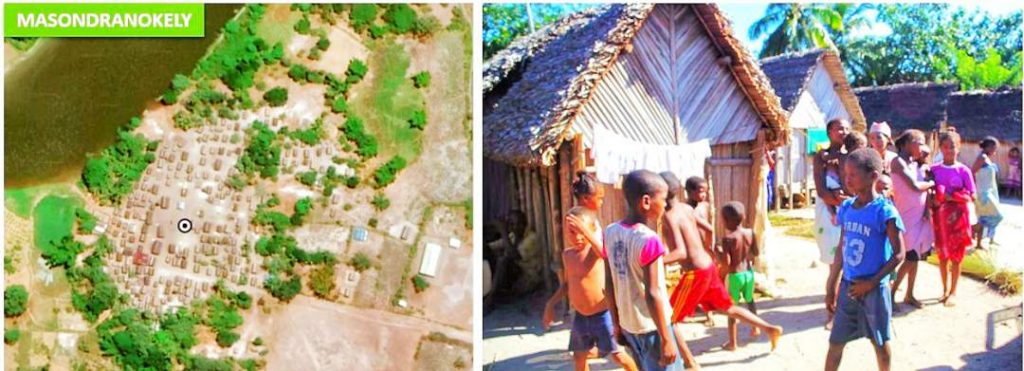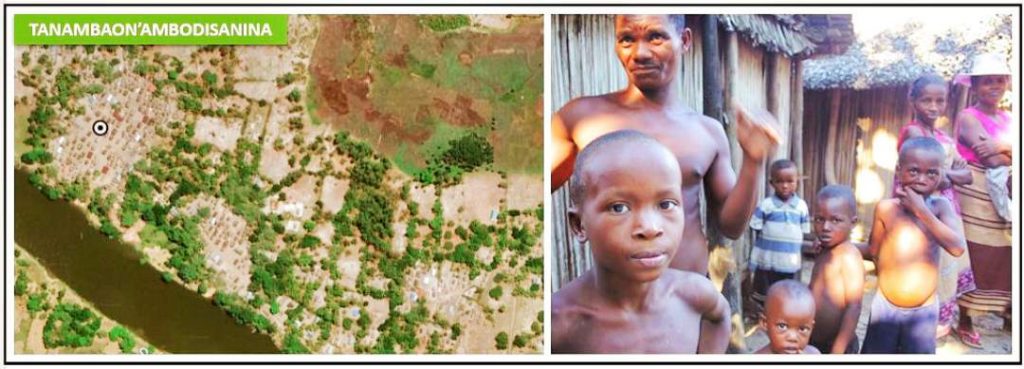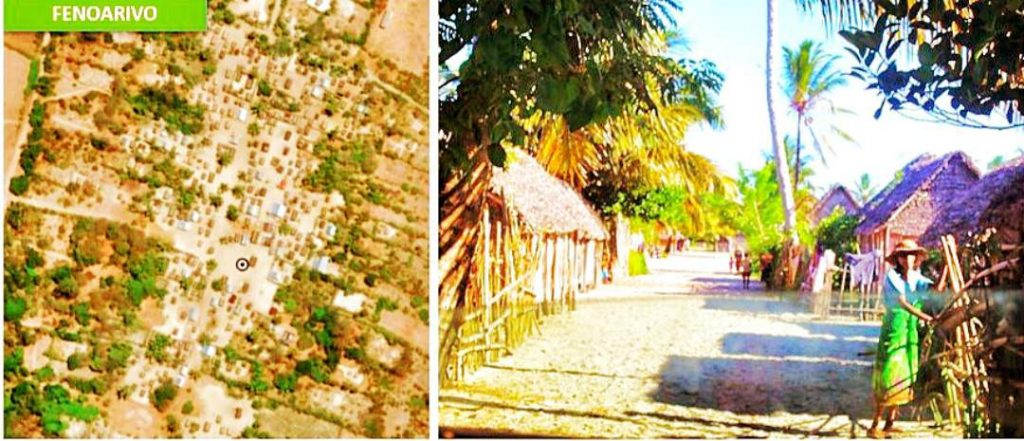This Program is made possible through a partnership of WATER CHARITY and THE MADAGASCAR WATER PROJECT INC.
Village Well Program Phase II: twenty-two wells in 14 villages in Madagascar
Background
Water Charity’s partnership with The Madagascar Water Project began last year. Thirteen water wells were drilled in six villages that now provide clean water to over 15,000 people. Water quality was ensured with sealed wells that provide water with a hand-operated pump and periodic testing for both chemical and biological contamination. The wells were followed-up with the organization of Well Management Committees, WASH training, technical training-support and operational oversight to ensure the wells remain productive for many years.
WASH is the acronym for Water and Sanitation Health Hygiene. It puts a multi-dimensional aspect to water and its use to improve the sanitation, health and hygiene of the population. Clean water is a new element in many places and guidance is needed to show the beneficiaries how to use it for its full benefits.
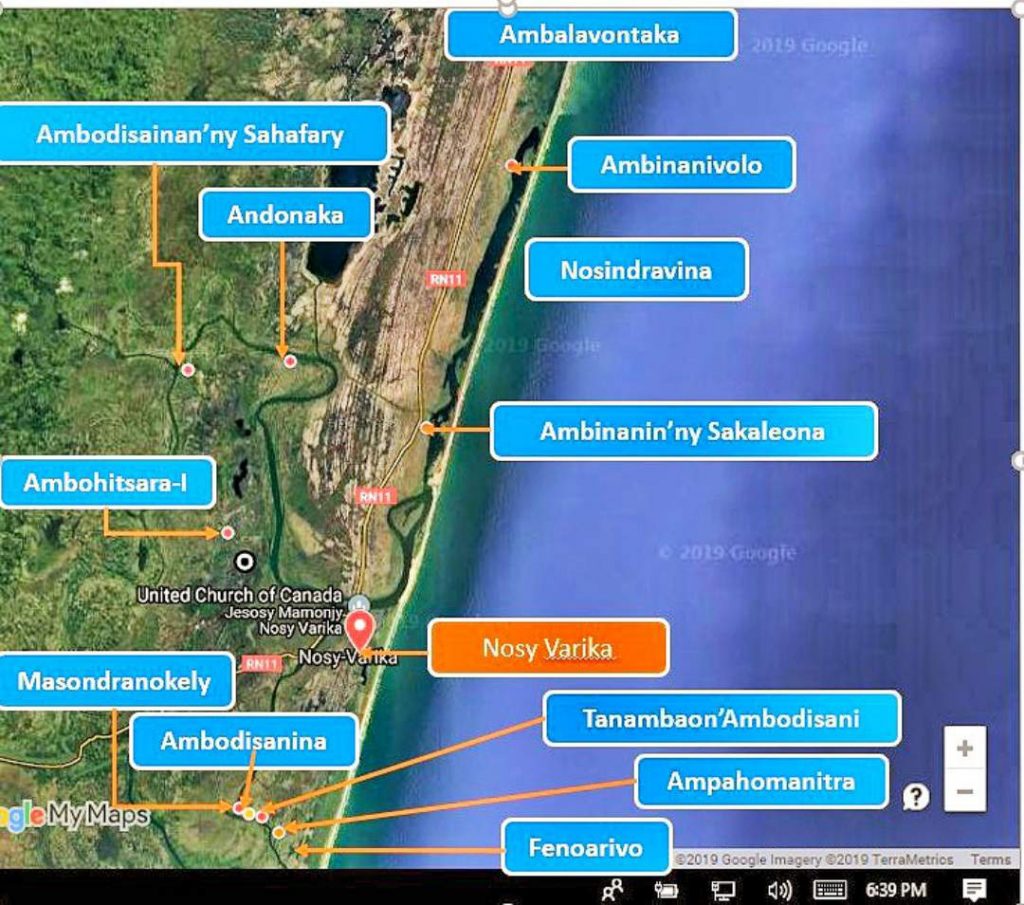
Location
Villages included in the partnership area are largely undeveloped due to pervasive poverty and their geographical isolation. The area is nearly inaccessible and far from their regional government centers in Toamasina and Fianarantsoa. Phase II will expand the project area south of the Mangoro River (Salehy), through Masomeloka to Nosy Varika and beyond, moving into the remote area where the distal ends of the Regions of Antsinanana and Fianarantsoa meet.
A minimum of 22 additional wells will be drilled in villages located in a 30-mile stretch along the coast south of Masomeloka. It will include 12 rural villages, ranging in size from 500 to 5000 people, with a combined population exceeding 18,000 people. The villages included in the Phase II program are listed below, going north to south from Masomeloka.
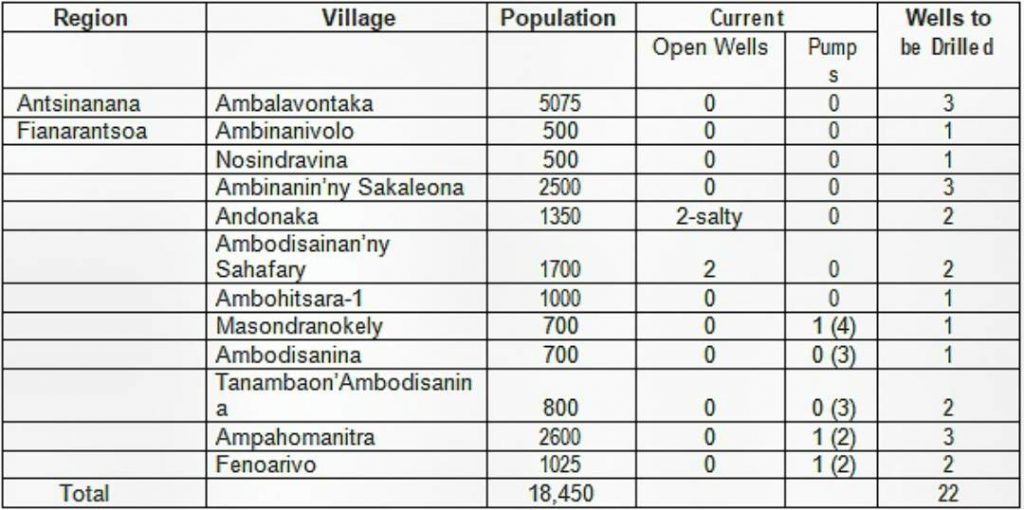
The number of pumps shown in parenthesis ( ) are the number of broken pumps in each village. Many wells are built in rural villages with the best of intentions, oftentimes by contractors hired by NGOs that only drill wells and have no maintenance or sustainability programs. With no technical support, the pumps eventually fail with no system in place to fix them. The Madagascar Water Project and Water Charity Partnership have a time-dimensional program that ensures the long-term sustainability of the project objectives.
The Village of Nosy Varika, population 7300, is in the project area and is a good example of the sustainability problem on a much bigger scale. A large water infrastructure project was built two years ago, only to break down in just a few weeks due to a lack of technical support and money for fuel. Their project includes water reservoirs, pipelines and pump stations, which is beyond the scale of the projects conducted by The Madagascar Water Project. Regrettably, this type of problem is all too common in Madagascar as it tries to dig its country out of the pit of poverty.
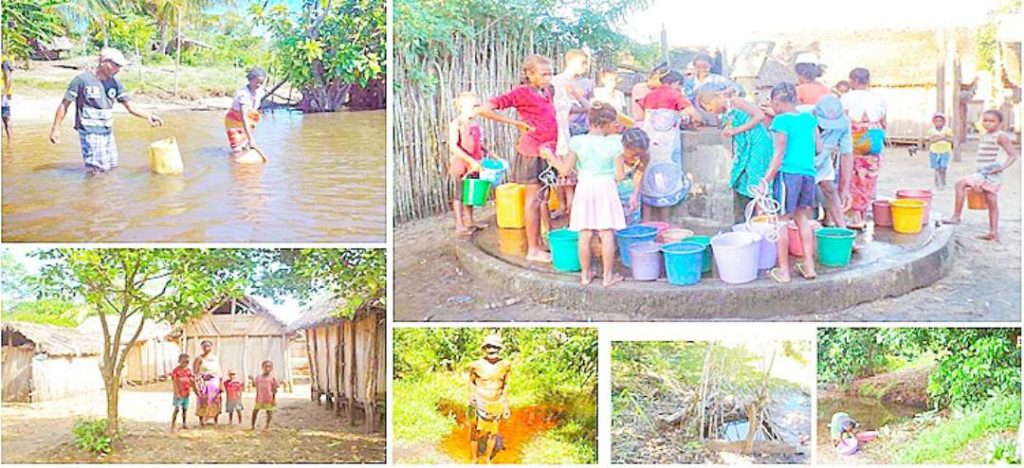
Community Description
The project area lies along the Pangalana Channel and some of its tributaries. The area is a long, narrow, sandy coastal plain on the eastern edge of the Madagascar Highlands. These conditions are optimal for the shallow water wells built by the Project. Most wells are 6 to 7 meters below ground level, some shallower, few deeper. The Project has been successful at finding locations in rural villages where the groundwater at these depths is uncontaminated. The Pangalana is a freshwater intracoastal waterway that serves as the primary source of drinking water as well as the location for washing, bathing, toileting, and waste disposal. The Pangalana is accessible by small boats and serves as the lifeline to the outside world for these communities.
Villages in the area are made up of clusters of thatched houses made from local materials ranging in size from single-family enclaves of 10 homes to large villages with stores, commerce, schools, government offices, perhaps a small clinic, and a thousand homes or more. About 60% of the population is under the age of fifteen. Extreme poverty, malnutrition, water-borne disease, malaria and even the plague are widespread.
The villagers support themselves with artisanal fishing and farming. Lacking electricity, water services, sanitation facilities, most health & dental services, television, radio, and other amenities are taken for granted in the 21st Century, the people live in conditions not seen in communities in the developed world in over 100 years. The incredible progress the world has seen in the last century has passed them by. This description applies to hundreds of villages in the greater area. Most villages are accessible only by boat along the Pangalana Channel. During the dry season, the old road dating back to the French colonial days, Route Nacional RN-11A, is connected by a series of primitive auto ferries and can be used with a good 4WD vehicle. Logistics are one of the major challenges of this project. The villages are only 300 miles from the capital city of Antananarivo, but it takes a minimum of two days to travel there, when it is possible at all.
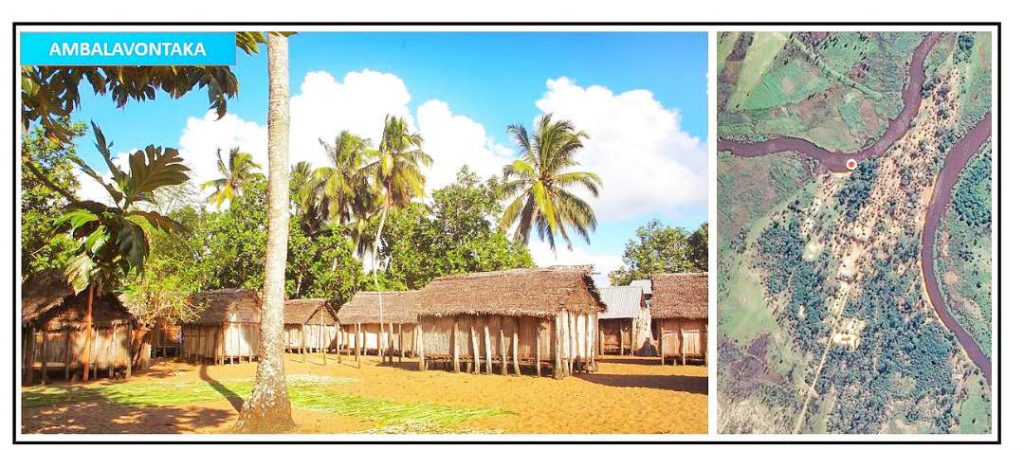
Program Objectives
The Project serves both Beneficiaries, those that benefit from the water, and Benefactors, those that support the program. It provides a direct, fast, visible and cost-effective way to provide aid to those in need of clean water. The specific Goals and Objectives of the Program are listed below:
• Assess and identify rural villages that are vulnerable to water-borne diseases due to a lack of clean, accessible, community-based water;
• Drill water wells inside villages; provide technical training, technical assistance, spare parts and oversight to ensure the long-term service of the well;
• Organize Well Management Committees to manage, maintain and provide community water services in an equitable manner; provide regular consultation with the Committee to ensure the sustainability of this function and to empower the community to improve and help itself;
• Provide guidance to the Committee and the wider community to utilize its water resources to develop and promote health, hygiene and sanitation initiatives;
• Reduce the incidence of water-borne disease to zero;
• Raise the quality of life in the village through better health; improve children’s health to help them attend and succeed in school; improve adult health to help them be more productive, increase their income, and to perform more activities related to an improved quality of life;
• Provide a means for people that want to support rural development in developing countries with a means to provide that support; provide goals that are effective, visible and quantifiable;
• Build a Madagascar company and train its staff to continue in perpetuity, without foreign help.
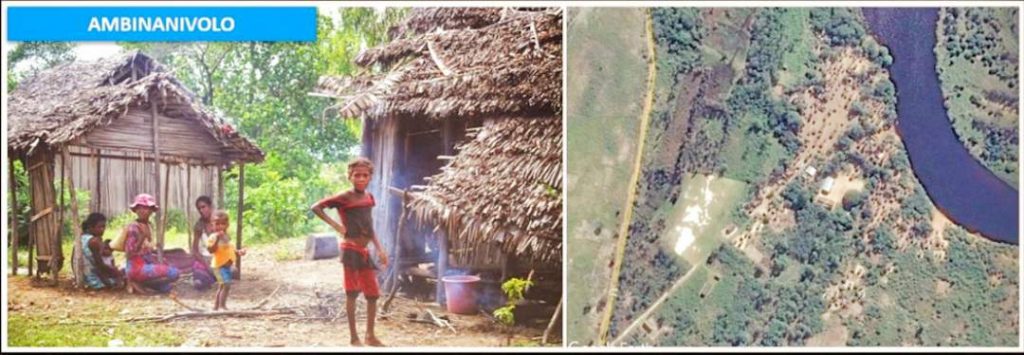
Problem Addressed
The Pangalana Channel is the primary source of drinking water in most villages. It is used for many activities which inevitably leaves it contaminated. A usable shoreline can be difficult to access and for some requires a long walk. Other sources of water, such as rivers, rice fields and open pits are more contaminated and not fit for drinking even after boiling. Many sources are unreliable, either going seasonally dry or being contaminated with sewage or sea water after large storms. Open wells eventually become contaminated after use and cannot be used for drinking without treatment. There are safety and security issues when walking outside a village after dark.
A lack of clean water, along with poor sanitation and nutrition, has resulted in widespread dysentery, stunted growth and childhood development, and higher death rates in vulnerable populations. With widespread poverty, limited government resources and a relative scarcity of NGO assistance, large gaps in the social support network exist. This project will help bridge that gap.
Local health data clearly shows accessible clean water will reduce the occurrence of water-borne diseases to nearly zero. Healthy people are less vulnerable to other diseases, which often kill people before old age does. Improved health allows more time to attend to the quality of life activities such as school, work, family care, and personal health.
Although the description above does not paint a nice picture, most people look at these problems as a fact of life because they have never seen anything different. We all know it can be much better and the Project is committed to bringing this to them and your support will go a very long way to achieve our goals.
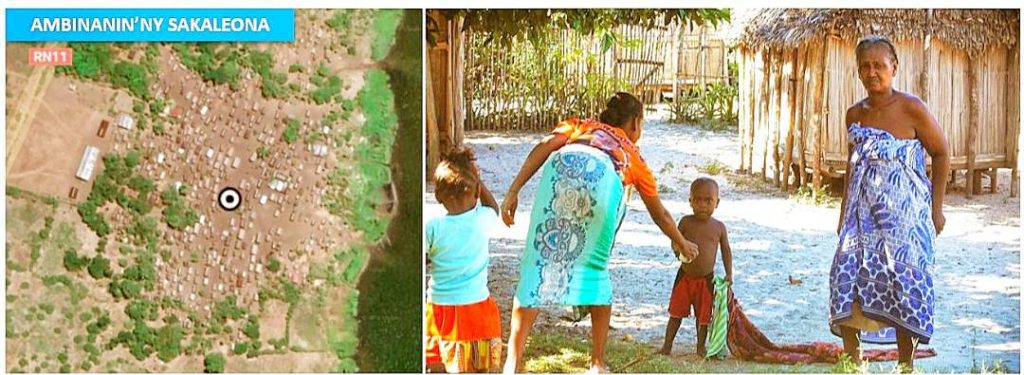
Project Description
The Village Well Program Phase II – Madagascar will provide clean water for twelve villages on the east coast of Madagascar in an area in and around Nosy Varika. It is an important infrastructure project that will provide the most basic essential element to living – clean, potable water. At least twenty-two wells will be drilled and fitted with hand-operated water pumps in villages ranging in size from 500 to 5000+ people.
The work will be done by The Madagascar Water Project. The Project has been drilling water wells in the area for the past four years and is responsible for 74 producing wells – including 13 wells sponsored by Water Charity – in 39 villages, providing clean water to over 40,000 people. They use a stainless-steel well design, with imported down-hole screens and locally available steel pipe and hand pumps. With routine maintenance, each well will produce clean water for 10 years or more. The Project maintains a trained Team on the ground to ensure the wells keep flowing.
The Project provides follow-up support with the organization of Well Management Committees, WASH training, technical training and support, and the provision of spare parts when needed. This follow-up support is key to the success of the Project and ensures the sustainability of the program objectives.
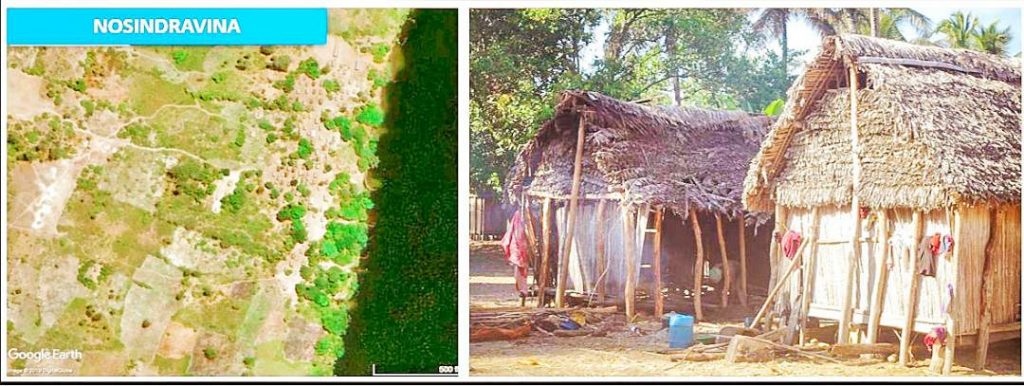
A Madagascar Water Project Assessment Team visited the area twice in recent months. Existing water resources and sanitation facilities were evaluated, and meetings were conducted with village leaders to learn of their needs and to assess their ability to accept and manage a new well. Geological studies were conducted to determine if groundwater was a viable resource.
Villages included in the Village Well Program – Phase II program were identified based on the urgency of their need for clean water, population size, geology, the community’s ability to accept responsibility for the well and their ability to manage the well to improve the sanitation, health and hygiene of the village.
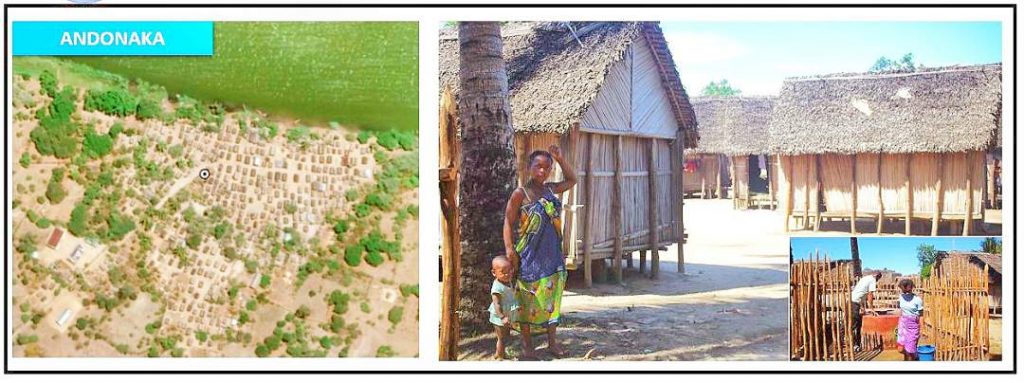
Monitoring and Maintenance
In addition to drilling the wells, the Project facilitates the organization of Well Management Committees and advises them on well management and resource utilization. The Project trains local personnel to maintain the well and provides tools and spare parts to perform these duties. The Project periodically inspects the pumps and wells and performs higher-level maintenance and repairs, when needed, using a Team based in Andovoranto.
The Project empowers each village to manage their own resources, but it maintains a helping hand, when needed, and a watchful eye to ensure everything goes as planned.

Project Impact
An estimated 18,450 people will benefit from the project. The addition of an accessible, community-based source of clean water has measurable effects on the community. The incidence of water-borne disease is reduced significantly, sanitation and hygiene are improved and infant mortality and the mortality of vulnerable segments of the population will go down. With less time required to fulfill the basic need for clean water, people will become more focused on other essential activities such as education, nutrition, family and improving their own quality of life.
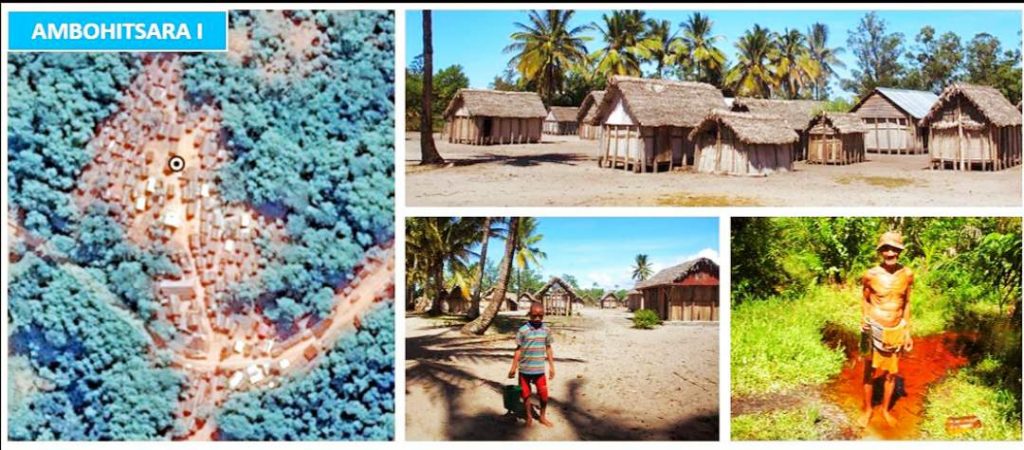
Dollar Amount of Project
Individual wells cost an estimated $750/well. Since logistics are the biggest expense, there is an economy of scale once you get to the area. The estimated cost of the 22-well projects is $15,000. Savings due to an economy of scale or lower project costs/well will be used to build more wells.
Program Funding
The funds to start this program have been contributed by an anonymous donor. Your contribution using the Donate button below will be used to expand the program.

This project has been completed. To read about the conclusion, CLICK HERE.
To read details about the Village Well Program Phase I, CLICK HERE.
